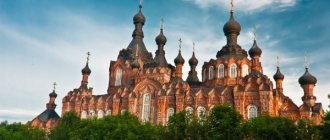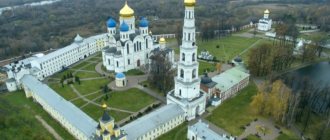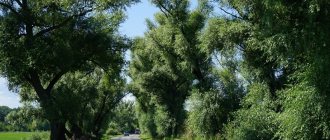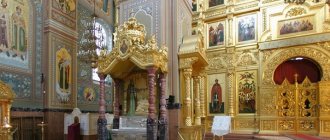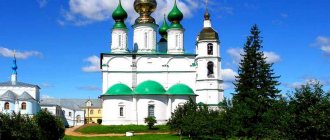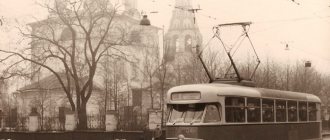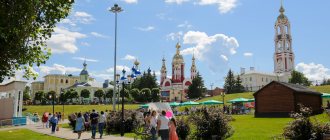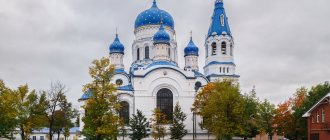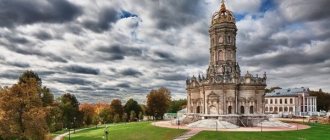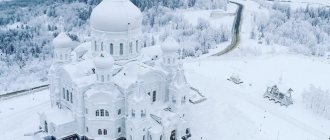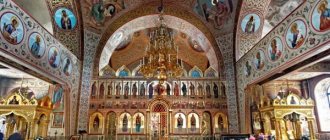Mir
Russia Moscow region Avdotino village Nikolo-Berlyukovskaya desert Map loading in progress...
{"format":"leaflet","minzoom":false,"maxzoom":false,"limit":50,"offset":0,"link":"all","sort":[""], "order":[],"headers":"show","mainlabel":"","intro":"","outro":"","searchlabel":"\u2026 \u0441\u043b\u0435\ u0434\u0443\u044e\u0449\u0438\u0435 \u0440\u0435\u0437\u0443\u043b\u044c\u0442\u0430\u0442\u044b","default":"","import-annotation":false,"width ":"auto","height":"350px","centre":{"text":"","title":"""link":"""lat":55.92906500000000136196831590496003627777099609375,"lon": 38.2334340000000025838744477368891239166259765625,"icon":""},"title":"","label":"","icon":"","lines":[],"polygons":[],"circles":[ ],"rectangles":[],"copycoords":false,"static":false,"zoom":8,"defzoom":14,"layers":["OpenStreetMap"],"image layers":[] ,"overlays":[],"resizable":false,"fullscreen":true,"scrollwheelzoom":true,"cluster":false,"clustermaxzoom":9,"clusterzoomonclick":true,"clustermaxradius":80, "clusterspiderfy":true,"geojson":"","clicktarget":"","showtitle":true,"hidenamespace":false,"template":"","userparam":"","activeicon": "","pagelabel":false,"ajaxcoordproperty":"","ajaxquery":"","locations":[{"text":"\u003Cb\u003E\u003Ca href=\"/palomnik/%D0% 9D%D0%B8%D0%BA%D0%BE%D0%BB%D0%BE-%D0%91%D0%B5%D1%80%D0%BB%D1%8E%D0%BA%D0%BE %D0%B2%D1%81%D0%BA%D0%B0%D1%8F_%D0%BF%D1%83%D1%81%D1%82%D1%8B%D0%BD%D1%8C\" title=\»\u041d\u0438\u043a\u043e\u043b\u043e-\u0411\u0435\u0440\u043b\u044e\u043a\u043e\u0432\u0441\u043a\u0430\u044f\u043f\u04 43\u0441\u0442\ u044b\u043d\u044c\»\u003E\u041d\u0438\u043a\u043e\u043b\u043e-\u0411\u0435\u0440\u043b\u044e\u043a\u043e\u0432\u0441\u043a\u 0430\u044f\u043f\u0443 \u0441\u0442\u044b\u043d\u044c\u003C/a\u003E\u003C/b\u003E\u003Chr /\u003E\u003Ca href=\"/palomnik/%D0%A1%D0%B2%D0%BE%D0 %B9%D1%81%D1%82%D0%B2%D0%BE:%D0%90%D0%BD%D0%BD%D0%BE%D1%82%D0%B0%D1%86%D0% B8%D1%8F\" title=\"\u0421\u0432\u043e\u0439\u0441\u0442\u0432\u043e:\u0410\u043d\u043d\u043e\u0442\u0430\u0446\u0438\u044f\"\u003 E > 2\u043d\u044b\u0439\ u043c\u043e\u043d\u0430\u0441\u0442\u044b\u0440\u044c \u0432 \u041c\u043e\u0441\u043a\u043e\u0432\u0441\u043a\u043e\u0439 \u 043e\u0431\u043b\u0430\u0441\ u0442\u0438. XVII \u0432\u0435\u043a\u0430, \u0437\u 0430\u043a\u0440\u044b\u0442 1919. 1919. 1919 \u043a\u043e\u043d\u0447\u0430 \u0442\u0435\u043b\u044c\u043d\u043e \u043f\u0435\u0440\u0435\u0434\u0430\u043d \u0426\u0435\u0440\u043a\u0432\u0438 \u0442 \u043e\u043b\u044c\u043a\u043e \u0432 2015 \u0433\u043e\u0434\u0443.","title":"\u041d\u0438\u043a\u043e\u043b\u043e-\u0411\u0435\u0440\u043b\u044e\u043a\u043e\ u0432\u0441 "link":""lat":55.92906500000000136196831590496003627777099609375, "lon":38.2334340000000025838744477368891239166259765625,"icon":""}], "imageLayers":[]}
55.925294; 38.236557
Russia, Moscow region, Bogorodsky urban district, Avdotino village, Central street
Avdotino village, Moscow region
Russia
Telephone:
8 (968) 374-11-07
Email:
Nikolo-Berlyukovskaya hermitage
- Orthodox monastery in the Moscow region. Founded at the beginning of the 17th century, closed in 1919. The monastery ensemble was finally transferred to the Church only in 2015.
History[edit]
The Nikolo-Berlyukovskaya hermitage was founded at the beginning of the 17th century and restored at the end of the 18th century.
The Nikolo-Berlyukovsky Monastery is located near the village of Avdotyina, 20 kilometers from Bogorodsk. Tradition says that the name Berlyuki comes from the nickname of a robber who once lived here. Here in the 17th century, next to the Church of St. Nicholas, the monk Varlaam settled, who most likely came from the neighboring Trinity-Stromynsky Monastery. During the Time of Troubles, the temple was burned by the Poles, and Varlaam built a small wooden chapel. Soon a small stone church was built on the site of the chapel.
After the abolition of the patriarchate by Peter I, these lands passed to the Kremlin Miracle Monastery, and then to the Trinity-Stromynsky Monastery. The monks of the monastery formed a community at the St. Nicholas Church. In 1732 - 1734 it was ruled by the Sarov hieromonk Josiah. Under his successor, the builder Sylvester (as the abbot was called), the community already had a small courtyard in Moscow. According to the inventory of property of 1764, behind the Nikolo-Berlyukovskaya Hermitage there was a temple with two altars - the Life-Giving Trinity and St. Nicholas, a wooden bell tower, fraternal and abbot's cells. Three chapels in nearby villages were also assigned to it. The brethren numbered eight people.
Catherine II continued the policy of Peter I of closing monasteries. In 1770, the monastery was abolished, its property was transferred to the Catherine Hermitage near Moscow. But soon Metropolitan of Moscow Platon (Levshin), who was visiting the Savvinsky estate of Senator V.I. Lopukhin (not far from Berliuk), decided to resume it. In 1777, he invited abbot Luke from the Stefano-Makhrishensky monastery in the Vladimir province, who was replaced two years later by the energetic monk Joasaph from the Perervinsky monastery near Moscow, also founded in honor of St. Nicholas. In August 1778, church utensils from the Moscow Church of St. Nicholas in Mylniki were delivered to Berliuki. The reviving monastery was assisted by many wealthy Muscovites, whose estates were located in these places.
On December 2, 1779, the Nikolo-Berlyukovskaya Hermitage was approved as a provincial monastery. Two chapels were assigned to it, one of which was located in the village of Psarki, and the other in Moscow, near the Stone Bridge, where a monastery courtyard was formed a little later. A year later, the monastery also returned three chapels that had previously belonged to it, and in 1787 they gave another one - on Yelokhovskaya Street in Moscow.
Under Abbot Joasaph, who ruled the monastery for fifteen years, a new, warm, three-altar church was built on the site of the old one - in the name of the Holy Life-Giving Trinity with the chapels of St. Nicholas and the Martyr Mina, as well as the fraternal and abbot's buildings. In 1794, Joasaph died. A metal plaque with poems, which the Moscow ruler dedicated to the deceased abbot, was placed over his grave. Joasaph’s place was taken by his brother, Hieromonk Nicholas, who labored here until 1806. His successors were first the Lavra hieromonk Jacob, and then the monk Pachomius, who was especially concerned that with the growth of material well-being, the spiritual power of the monastery would also be strengthened - the Berlyukovskaya hermitage lived according to strict communal rules.
By order of Metropolitan Platon, a wooden church in the name of the Kazan Icon of the Mother of God from the village of Toporkova (where the Metropolitan’s grandfather was from) was moved to the brotherly cemetery of the monastery.
In 1829, the icon “The Kiss of Christ the Savior by Judas” was found in the monastery, which soon became famous for its miracles. Here is what Nadezhda Yakovleva, whose parents often visited the hermitage, writes about this: “A woman came to the monastery who, being seriously ill, saw in a dream that prayer in front of a rare icon depicting the betrayal of Judas would bring her relief. Not finding her in any of the monastery churches, she turned to the monks. There was no icon in the sacristy either. Then the monastery baker remembered that the wooden circle with which he closed the kneading bowl contained half-erased faces. They washed it and discovered the icon.” According to Ivan Shevelkin, pilgrims going to the monastery said that they were going to the Savior, meaning the miraculous icon.
An important milestone in the history of the monastery was the time of the abbot of Hieromonk Benedict (1829 - 1855). Through the Peshnosh and Optina monks, the brethren of the Nikolo-Berlyukov Monastery were under the spiritual influence and tutelage of the disciples of the famous elder Paisius Velichkovsky. Benedict continued this blessed tradition. He was also involved in temple construction. In 1840, the monastery consecrated a newly built gate church in the name of St. Basil the Great. In 1848, Metropolitan Philaret consecrated the five-domed Cathedral of Christ the Savior. Like the Moscow one of the same name, it was created in memory of the victory in the Patriotic War of 1812.
In 1853, Metropolitan Philaret again visited the monastery and consecrated the stone church in the name of All Saints, built at the expense of the Moscow merchant Nabilkin. Through the efforts of Abbot Benedict, a two-tier bell tower for a sixteen-ton bell, a stone fence, a fraternal building, a bathhouse, a hotel and a hospice house, as well as various outbuildings were erected in the monastery.
In 1840, Benedict was the first of the abbots of the Nikolo-Berlyukovsky monastery to receive the rank of abbot, and in 1853 he became an archimandrite. This is how Archimandrite Pimen, who, when he was dean of Moscow monasteries, repeatedly visited the Berlyukov Hermitage, recalled him: “He was about 60 years old, very handsome, short in stature, had a small beard and hair streaked with gray. He was very friendly to strangers, tirelessly diligent for the monastery, exacting and strict in management.”
Archimandrite Benedict died in 1855, leaving the monastery spiritually and materially prosperous. The new abbot was the Athonite monk Parfeniy (Ageev), a famous spiritual writer, author of the popular “Tales of a Journey through Russia, Moldova, Turkey and St. earth" and books devoted to polemics with the Old Believers. In 1860, Parfeniy became rector of the newly opened Guslitsky Spaso-Preobrazhensky Monastery, founded by decree of Alexander II specifically for converted schismatics.
Parthenius was replaced by the Lavra monk Joasaph, under whom a temple was erected in honor of the Cathedral of St. John the Baptist over the cave of Elder Macarius who lived in the Berlyukovskaya Hermitage. Hieroschemamonk Macarius (Bryushkov), who died in 1841, was a student of the famous Valaam ascetic Cleopas. He, like his follower and prayer monk Theodorit, continued the spiritual tradition of St. Seraphim of Sarov, the great Optina and Valaam elders. Hundreds of pilgrims went to the monastery. One of them wrote: “All of Moscow knows the Berlyukov Hermitage and diligently visits it <...>, the monastery is distinguished by truly patriarchal hospitality.”
The number of brethren also grew. In 1864 there were already 56 inhabitants here, and in 1884 - 90. In 1870, the monk of the Nikolo-Ugreshsky Monastery near Moscow, a student of Archimandrite Pimen, Nil (Safonov), became the rector of the Berlyukov Hermitage. In 1878, he opened a school for peasant children at the monastery, which soon became an exemplary school. Neil owns the first description of the Nikolo-Berlyukovsky Monastery, published in 1875.
In 1895, according to the design of the architect A.S. Kaminsky, construction began on a new monastery bell tower, which was almost as big as the Ivan the Great bell tower in the Kremlin. In 1898, the bell tower was consecrated. In the same year, the third edition of the “Historical Description of the Nikolaev Berlyukov Hermitage” was published, compiled by the church historian, priest Leonid Ivanovich Denisov, who later took monastic vows with the name Arseny (he is also the author of the popular book “Orthodox Monasteries of the Russian Empire” and several articles about icons Berlyukovsky Monastery).
After 1917, a psychiatric hospital was located in the Nikolo-Berlyukovsky Monastery.
In 1993, the authorities refused to return the well-preserved monastic ensemble of the Church. In the same year, a cross was torn from the monastery bell tower by a storm, which was not removed even under Soviet rule.
Positive changes for the monastery came only in the 21st century. In 2004, the Cathedral of Christ the Savior, the monastery bell tower and the cemetery area where the cave hermitage was located were transferred to the Church. Monastic life was resumed within the walls of the monastery. In 2015, all buildings previously occupied by a psychiatric hospital were transferred to the Nikolo-Berlyukovskaya Hermitage. Currently, repair and restoration work is underway to return the monastery complex to its original appearance.
Interior decoration
In the second half of the 19th century, a 3-ton cast iron iconostasis of Kasli casting with gilded coating was installed in the cave monastery church. It covered the altar part, located in the cave cell of the hieromonk schema-monk Macarius. The icons placed in the partition are made on copper sheets.
The monks lined the walls and floor of the underground rooms with bricks; the top of the temple remained untouched, made of karst limestone. The vaults of the rooms are very low; in many passages it is impossible to stand up to your full height.
The upper church of the Spassky Cathedral has a light and spacious interior; in the basement the vaults are much lower. The floors are lined with patterned tiles, the steps are lined with white stone. The vaulted walls of the room were decorated with paintings of biblical scenes and Arabesques right up to the cornice; a carved 2-tier iconostasis, made in the Rococo style with gilding, separated the altar part of the room.
The interior of the warm Trinity Cathedral was completely painted with frescoes. The luxurious 3-tier gilded iconostasis is decorated with precious rosewood and carved walnut columns.
Opening hours and schedule of services
Interesting excursions are organized for Orthodox pilgrims and guests of the monastery, telling about the history of the monastery. The duration of the program is about 1 hour. The estimated cost for a group of up to 10 people is 1 thousand rubles. In addition, daily services are held in the monastery churches according to the following schedule:
| During weekdays | Midnight Office and Matins | from 6 o'clock |
| Watch. Liturgy | 8 hours | |
| Evening service | from 17-30 hours | |
| On Saturdays | All-night vigil | 16 hours |
| On holidays and Sundays | Divine Liturgy | from 8-40 o'clock |
Also, every Thursday there is a prayer service with the reading of the Akathist to the Holy Saint Nicholas. On Fridays, general prayers are held in front of the “Inexhaustible Chalice” image of the Mother of God. Every Saturday you can pray together before the miraculous icon of “The Kiss of Christ by the Traitor Judas.”
On Sundays after the Liturgy, the brethren pray for the departed, and once at the beginning of the month a prayer service is served in the lower Church of St. Michael the Archangel in front of the image of the Mother of God “All-Tsarina”.
Where to stay
Tourists can explore all the sights of the monastery in one day. The monastery provides free housing for visiting workers. Other guests and pilgrims can stay at the nearest hotel or private sector.
The holiday complex in the nearby village of Voskresenskoye is called the Emerald City, located on the street of the same name, building 1. The restaurant serves a hearty continental breakfast in the morning, and at other times you can order dishes from the menu.
The health complex has free secure parking, an indoor swimming pool and a seasonal summer pool with a spacious outdoor sunbathing terrace. There is also a common lounge area and equipped barbecue facilities.
Guests are offered relaxation in a hammam or sauna, massage, swimming in a lake or a cold pool, walks through ecologically clean forests and fields, and their own farm with a mini zoo and delicious products. Children will also enjoy the mini pool, outdoor playground and indoor board games room, and there are children's TV channels.
For young people, there are night discos with a DJ, a bar with soft drinks, karaoke and billiards. Guests are offered a budget double room with a double bed and all amenities for 2 thousand rubles. The room has a modern TV, wireless Internet connection, and all the necessary amenities for a comfortable stay.
You can stay in the village of Dyadkino, where they offer a room in a guest house on Sosnovaya Street 5, with a magnificent garden and views of the beach. The hotel complex has a fitness room, karaoke, and a children's play club.
Guests can relax in a spacious common lounge area, sunbathing terraces, a tennis table or a game of billiards. The room has all the amenities and includes a kitchenette with a refrigerator, electric kettle and microwave.
All rooms have modern cable TVs and the bathrooms include a hairdryer and free toiletries. In the mornings, residents of the complex are offered a buffet breakfast. The cost of double accommodation can be selected from 2.3 thousand rubles.
The doors of the Ulitkino holiday resort complex in the village of Raiki on Tsentralnaya Street 32B are also open. The hotel in a picturesque pine forest on the river bank offers relaxation in a Russian bathhouse with an indoor swimming pool. Guests can play ping-pong, tennis or football on the outdoor sports grounds; there is a rental of boats, sleds and skis, and a small zoo for children.
Free secure parking is provided for car owners, but guests can be transported by private bus from the metro station. Here you can stay in a room or rent a separate Russian-style wooden cottage for the weekend.
All rooms are equipped with all necessary amenities. There is a TV with cable channels, a refrigerator, an electric kettle, and heating. Prices for double accommodation start from 3 thousand rubles.
The Nikolo-Berlyukovsky active monastery in the near Moscow region with great joy welcomes guests, tourists, Orthodox pilgrims and workers who flock to these sacred and incredibly picturesque places from all corners of the vast country.
Interesting facts and legends
On May 24, 1829, a significant miraculous event occurred: a blind woman, Tatyana Ivanovna Kuznetsova, was granted complete healing from the acquired image of “The Kiss of Jesus Christ by Judas.”
After this, the miraculous icon was solemnly transferred to the Trinity Cathedral in a procession of the cross in front of a huge crowd of people. He stayed in the monastery until the beginning of the last century, attracting a huge number of pilgrims.
Traces of the miraculous icon are currently lost. The main shrine of the newly opened monastery was another ancient image of the same name, which was presented to the future monk Evmeniy by an elderly parishioner of the temple in Mytishchi.
And only 7 years after this significant event, Hieromonk Evmeniy was appointed rector to restore the Berlyukov Hermitage. Thousands of believers still pray before her for healing from eye diseases and other ailments. The monastery's Spassky Cathedral appeared earlier than the similar well-known Moscow church; it was built in honor of the 25th anniversary of the victory over Napoleon.
The 91-meter stone bell tower became the tallest in the Moscow region and entered the top five tallest monastery belfries in Russia. Its dome is topped with a 622-kilogram copper cross. The monastery has its own Alley of Romanov Glory with memorial busts of Russian emperors.
Contacts
The Nikolo-Berlyukovsky Monastery is located in the Noginsk district of the Moscow region in the village of Avdotino 12. The monastery maintains its own website, which can be found at: berluki.
There is also an Instagram account: monberluki, where information is updated regularly. The monastery staff shoots and posts videos to support the monastery’s own YouTube channel: user/monberluki.
How to get there by car, public transport
The Nikolo-Berlyukovsky Monastery is located very close to the capital, 42 km northeast of Moscow.
- You can get there by car through the Shchitnikovo exit along the Shchelkovskoe highway through the city of Chkalovsky, the village of Aniskino and the villages of Yunost and Raiki, passing the bridge over the Vorya River, after 200 m make a right turn following the sign, go straight to the village of Avdotyno. You can enter the coordinates for your car navigator: 55.929355, 38.230985.
- It is also easy to get from Moscow by direct bus No. 321 from the Shchelkovskaya metro station.
- The electric train to Chkalovskaya station departs from Yaroslavsky station, after which you will need to transfer to bus 321 and go to your destination.
